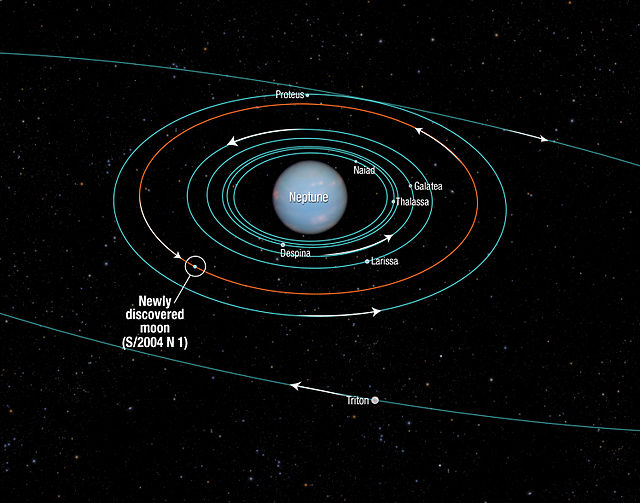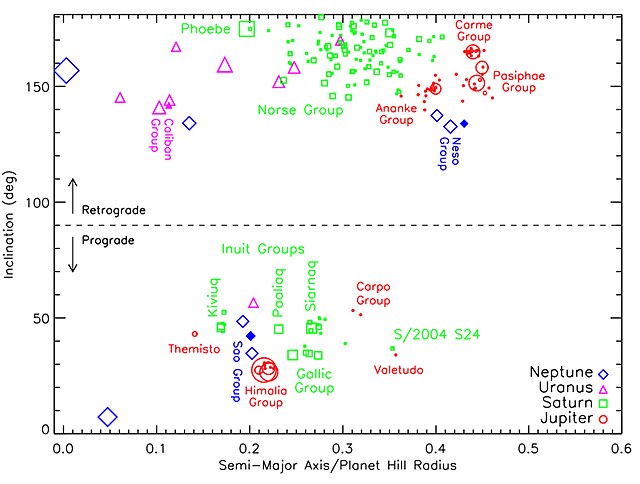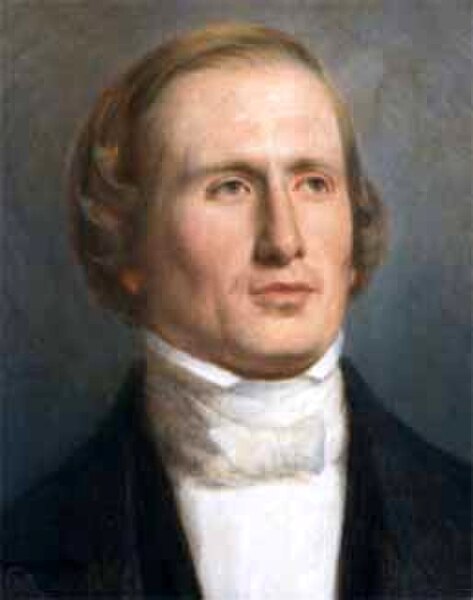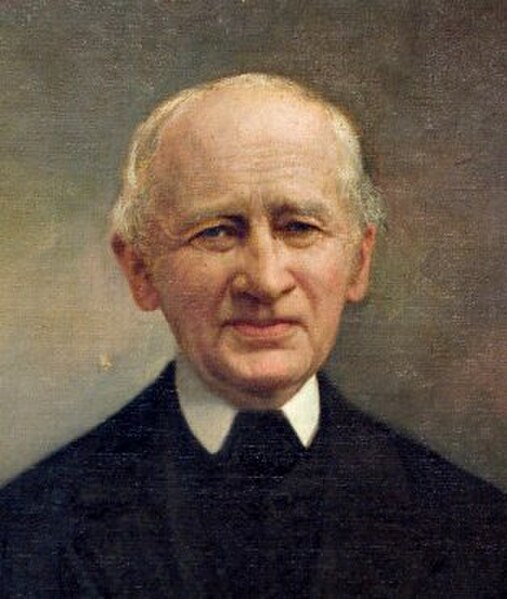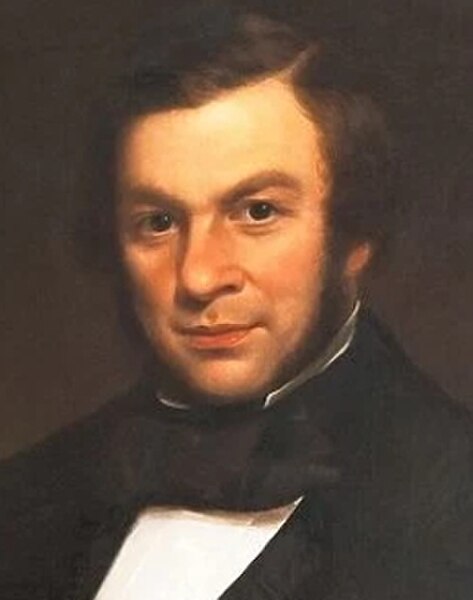The planet Neptune has 16 known moons, which are named for minor water deities and a water creature in Greek mythology. By far the largest of them is Triton, discovered by William Lassell on October 10, 1846, 17 days after the discovery of Neptune itself. Over a century passed before the discovery of the second natural satellite, Nereid, in 1949, and another 40 years passed before Proteus, Neptune's second-largest moon, was discovered in 1989.
Orbit diagram of Neptune's inner moons including Triton, with their names and orbit directions indicated
Size comparison of Neptune's seven inner moons
Irregular satellites of Jupiter (red), Saturn (green), Uranus (magenta) and Neptune (blue; including Triton), plotted by distance from their planet (semi-major axis) in the horizontal axis and orbital inclination in the vertical axis. The semi-major axis values are expressed as a fraction of the planet's Hill sphere's radius, while the inclination is expressed in degrees from the ecliptic. The relative sizes of moons are indicated by the size of their symbols, and the Sao and Neso groups of Neptunian moons are labeled. Data as of February 2024.
Neptune is the eighth and farthest known planet from the Sun. It is the fourth-largest planet in the Solar System by diameter, the third-most-massive planet, and the densest giant planet. It is 17 times the mass of Earth, and slightly more massive than fellow ice giant Uranus. Neptune is denser and physically smaller than Uranus because its greater mass causes more gravitational compression of its atmosphere. Being composed primarily of gases and liquids, it has no well-defined solid surface. The planet orbits the Sun once every 164.8 years at an orbital distance of 30.1 astronomical units. It is named after the Roman god of the sea and has the astronomical symbol , representing Neptune's trident.
Galileo Galilei
Urbain Le Verrier, the French astronomer who mostly successfully predicted Neptune's position in the sky using pure mathematics
Johann Gottfried Galle, the German astronomer who was requested by Le Verrier to look for Neptune using the Berlin Observatory's telescope
John Couch Adams, the British astronomer who independently calculated Neptune's position

